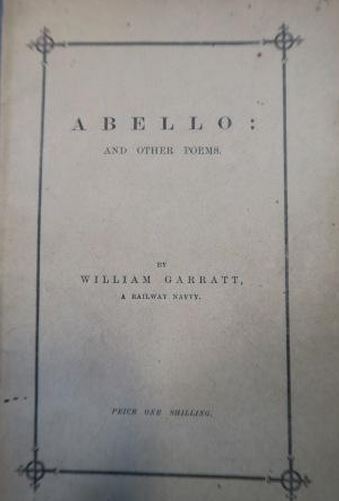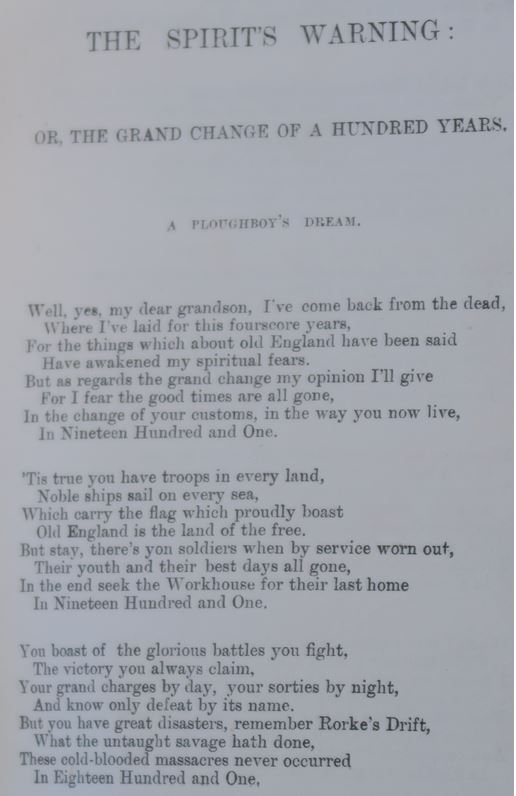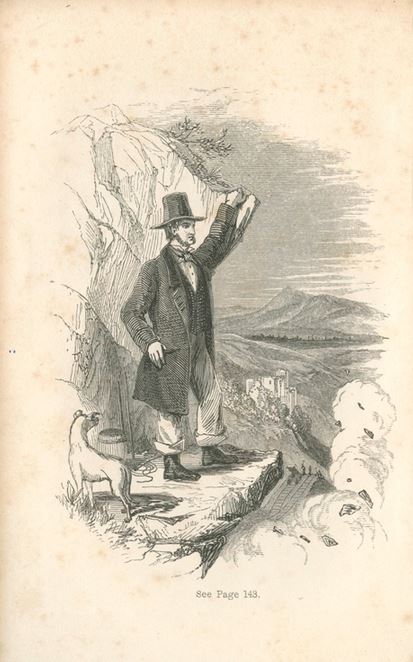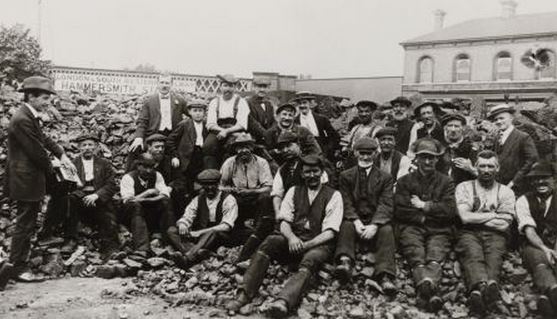If we think of a railway navvy, a few choice adjectives come to mind. I would hazard a guess that “erudite”, “literate” and “religious” were not among those chosen. However, we have recently acquired an intriguing collection of poetry by self-proclaimed railway navvy, William Garratt, where these adjectives would appear very appropriate.

Inside are written six poems; several are long in multi-part and cover topics on war (Anglo Zulu War and the Battle of Tel El-Kabir), poverty, suffering and homelessness. They are not primitive poems of action – that you might well expect from a man who has laboured hard for his living (compare with navvy songs here), instead they are sensitive, even mawkish, depictions of loss and struggle; of characters beset with hardship and counterbalanced with the life thereafter.

Strangely not once does the author refer to the railways, which begs the question: why then did William Garratt feel it appropriate to add the appellation “a railway navvy” on the cover and title page?
One theory is that William Garratt was a navvy ministered to by one of the Christian societies that often worked alongside navvy camps. We know through reading works by these missionaries (such as Anna Tregelles’ “The ways of the line“) that part of their role was to teach navvies to read as well as to instruct them in Christian doctrine (Victorian society did not approve of their “degenerate” ways). In this book Anna describes teaching this navvy, Salisbury (below), to make significant progress in reading within three months.

Did William Garratt attend similar instruction resulting in this book of poetry? The religious overtones of the poems would certainly suggest this was possible. Another clue perhaps is this inscription on the verso of the title page.
![It reads: "A Present to / Miss Elisa Parke / From A Friend/ From America/ With Compliments/ [Harry Yates?]"](https://blog.railwaymuseum.org.uk/wp-content/uploads/2015/07/navvy-poets4.jpg)
The fact that this book of poetry is very rare – it does not appear in any British or overseas library catalogue – is perhaps another clue. Whoever published it did not print very many copies – or if they did, they have not survived. Were such a few copies made as its chief purpose was as a propaganda tool? Did Miss Parke, and perhaps others, use it as weight to the Powers That Be, to ameliorate the conditions of the poor and continue funding their mission? That is certainly one theory. Another of course is that it is an elaborate hoax, that no navvy did write it. One thing is clear though, that whatever the story of this writer and his book of poetry, there are secrets to unlock here and a rarely heard voice to discover.
To discover William Garratt’s book of poetry for yourself, please request via Search Engine.

Good evening Karen
I wonder if you can help.
I am in my 3rd year of a history degree at University of South Wales. My dissertation subject is Navvies.
I have been researching Anna Tregelles and wondered if you would have information on what railway line in South Wales did she administer ?
I intend to come up to York at Easter but this query is holding me up at the present time. thanks Jill
You will not be remembered
For future lives made easier
By the sweat of your labour
No statue erected in your honour
For the canal ways you forged
You will not be remembered
For strong sinewy muscles
That quarried the stone
For magnificent buildings
You will not be remembered
For heavy burdens you shouldered
Bridges you erected
Metal rail lines you carried
Or the furnaces you worked
You will not be remembered
On the streets where you lived
Nor in the houses built for workers
Torn down as easily as you were
You will not be remembered
For the hurt to your body
Aged before time
The poverty you endured
Or the deprivation you suffered
You will not be remembered
No markers for your grave
Will show you once existed
No signs pointing the way
To the songs you once sang
You will not be remembered
For the tears you wept
As your children died
In this land you never called home
You will not be remembered
In that greener land over the seas
Though t’was easier to think upon
Old times and Irish smiles
But You will not be remembered
In the land of mountain and streams
For the ones you once loved
Lay dead of starvation
In that land of plenty
Unremembered too.
Kathie Sedgley 2009
‘Friend’ – with a capital ‘F’ is how the Quakers/Religious Society of Friends described themselves (now, as in the past.) Might be worth getting in touch with Friends House in London (right next to Euston station) to see if their archivists can help further?
Great blog, thanks.